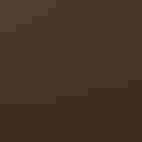Winter Wren
At a Glance
A secretive little bird of dense woods. It often creeps about among fallen logs and dense tangles, behaving more like a mouse than a bird, remaining out of sight but giving an occasional kimp-kimp callnote. Usually Winter Wrens live close to the ground; but in spring in the northern woods, males ascend to high perches in the conifers to give voice to a beautiful song of long-running musical trills.
All bird guide text and rangemaps adapted from Lives of North American Birds by Kenn Kaufman© 1996, used by permission of Houghton Mifflin Harcourt Publishing Company. All rights reserved.
Category
Perching Birds, Wrens
IUCN Status
Least Concern
Habitat
Forests and Woodlands, Freshwater Wetlands, Shrublands, Savannas, and Thickets
Region
Alaska and The North, California, Eastern Canada, Florida, Great Lakes, Mid Atlantic, New England, Northwest, Plains, Rocky Mountains, Southeast, Southwest, Texas, Western Canada
Behavior
Direct Flight, Flitter, Rapid Wingbeats
Population
11.000.000
Range & Identification
Migration & Range Maps
Despite the name, leaves most northern areas in winter. Migration is relatively early in spring and late in fall.
Description
4" (10 cm). Small and dark. Suggests House Wren but has shorter tail, stronger dark barring on flanks, different callnote. Usually paler on throat than Pacific Wren but most safely separated by range, callnotes.
Size
About the size of a Sparrow
Color
Brown, Tan
Wing Shape
Rounded
Tail Shape
Short
Songs and Calls
A high-pitched, varied, and rapid series of musical trills and chatters; call note an explosive kit! or kit-kit!
Call Pattern
Complex, Flat, Undulating
Call Type
Buzz, Chirp/Chip, Flute, Hi, Trill, Whistle
Habitat
Woodland underbrush; conifer forests (summer). Breeds mostly in moist coniferous forest with an understory of dense thickets, often close to water. Winters in very dense low growth in woods, especially along streambanks or among tangles, brushpiles, and fallen logs.
Sign up for Audubon's newsletter to learn more about birds like the Winter Wren
Behavior
Eggs
5-6, sometimes 4-7. White, with reddish brown dots often concentrated toward larger end. Incubation is by female, about 14-16 days.
Young
Probably both parents feed nestlings. Young leave the nest about 19 days after hatching.
Feeding Behavior
Usually forages very low among dense vegetation, searching for insects among foliage, on twigs and trunks, and on ground. When feeding low along streambanks, may take items from water's surface.
Diet
Mostly insects. Feeds on a wide variety of insects, including many beetles, caterpillars, true bugs, ants, small wasps, and many others. Also eats many spiders, plus some millipedes and snails. Occasionally may eat tiny fish. Also sometimes eats berries, perhaps mainly in fall and winter.
Nesting
Male sings in spring to defend territory and attract a mate. In courtship, male perches near female, with wings half-opened and fluttering, tail spread and moving from side to side, while he sings or calls. Male may have more than one mate. Nest site is in any kind of natural cavity close to the ground (lower than about 6'), including holes among upturned roots of downed trees, cavities in rotten stumps, old woodpecker holes, crevices among rocks, holes in streambanks, sometimes under porches of cabins. Within cavity, both sexes help build nest of grass, weeds, moss, rootlets, lined with animal hair and feathers. Male may also build several unlined "dummy" nests.
Conservation
Conservation Status
Still widespread and common.
Climate Threats Facing the Winter Wren
Choose a temperature scenario below to see which threats will affect this species as warming increases. The same climate change-driven threats that put birds at risk will affect other wildlife and people, too.





